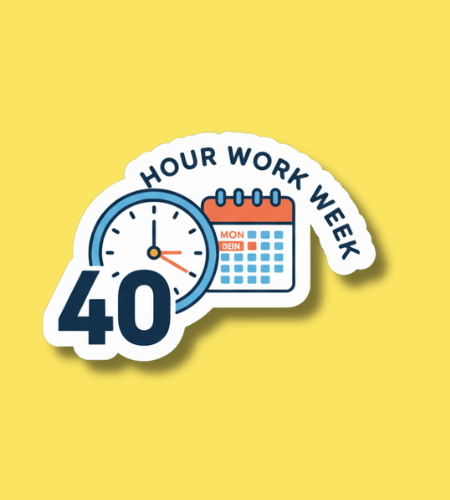40‑Hour Work Week Day is an observance held annually on October 24, a day to reflect on the standard full‑time work week of forty hours and what that means in today’s world.
Table of Contents
History of 40‑Hour Work Week Day
The concept of the forty‑hour work week grew out of labour‑movement efforts in the early 20th century, when many workers were putting in 10‑ to 16‑hour days and six‑day weeks. Eventually, advocates pushed for shorter hours, better conditions and more balance. In the United States, laws such as the Fair Labor Standards Act of 1938 helped establish the 40‑hour week as a standard for full‑time employment. Over the decades this benchmark has become deeply embedded in workplace culture around the world.
Why is 40‑Hour Work Week Day important?
On the surface, a day marking the 40‑hour work week might look dry or purely technical—but it’s really about the relationship between work and life, productivity and rest. It gives us a chance to ask: is the standard still the right one? How well does it match modern lifestyles, technological change or evolving expectations of workers?
It also invites reflection on fairness and health: whether people are being compensated properly for overtime, whether long hours lead to burnout, and whether we as a society value leisure, family, creativity and rest as much as productivity. The day reminds us that work‑time policies are not just legal rules—they shape human lives, wellbeing and economic systems.
- It highlights how full‑time work standards affect daily life
- It raises questions about whether forty hours are fair or optimal today
- It draws attention to overtime, worker health and work‑life balance
- It makes visible the legacy of labour movements in setting work hours
- It encourages discussion around how work might continue to evolve
How to Observe 40‑Hour Work Week Day
Observing this day doesn’t require grand gestures—rather, it invites small acts of awareness and dialogue. You might take a moment to tally how many hours you worked last week, reflect on how that fits with your life goals, or talk with colleagues or family about whether the current schedule feels right.
Another idea is to engage your workplace in a short discussion or proposed experiment—perhaps one day of flexible hours, or off‑loading some tasks to free up time, or simply sharing ideas on reducing meeting load or unnecessary overtime. If you’re an employee, you might try leaving on time and noting how that affects your mood; if you’re a manager, you might consider whether processes could be streamlined to reduce work hours without reducing value.
- Note how many hours you work this week and how you feel as a result
- Discuss with one colleague or friend whether the current work‑week feels balanced
- Try leaving work on time one day and see how it affects your evening
- Suggest a small experiment at work to reduce overtime or meeting burden
- Reflect on what you might do with an extra hour or two each week if work were trimmed
40‑Hour Work Week Day Dates Table
| Year | Date | Day |
|---|---|---|
| 2025 | October 24 | Friday |
| 2026 | October 24 | Saturday |
| 2027 | October 24 | Sunday |
| 2028 | October 24 | Tuesday |
| 2029 | October 24 | Wednesday |
Subscribe to our newsletter and never miss a holiday again!

